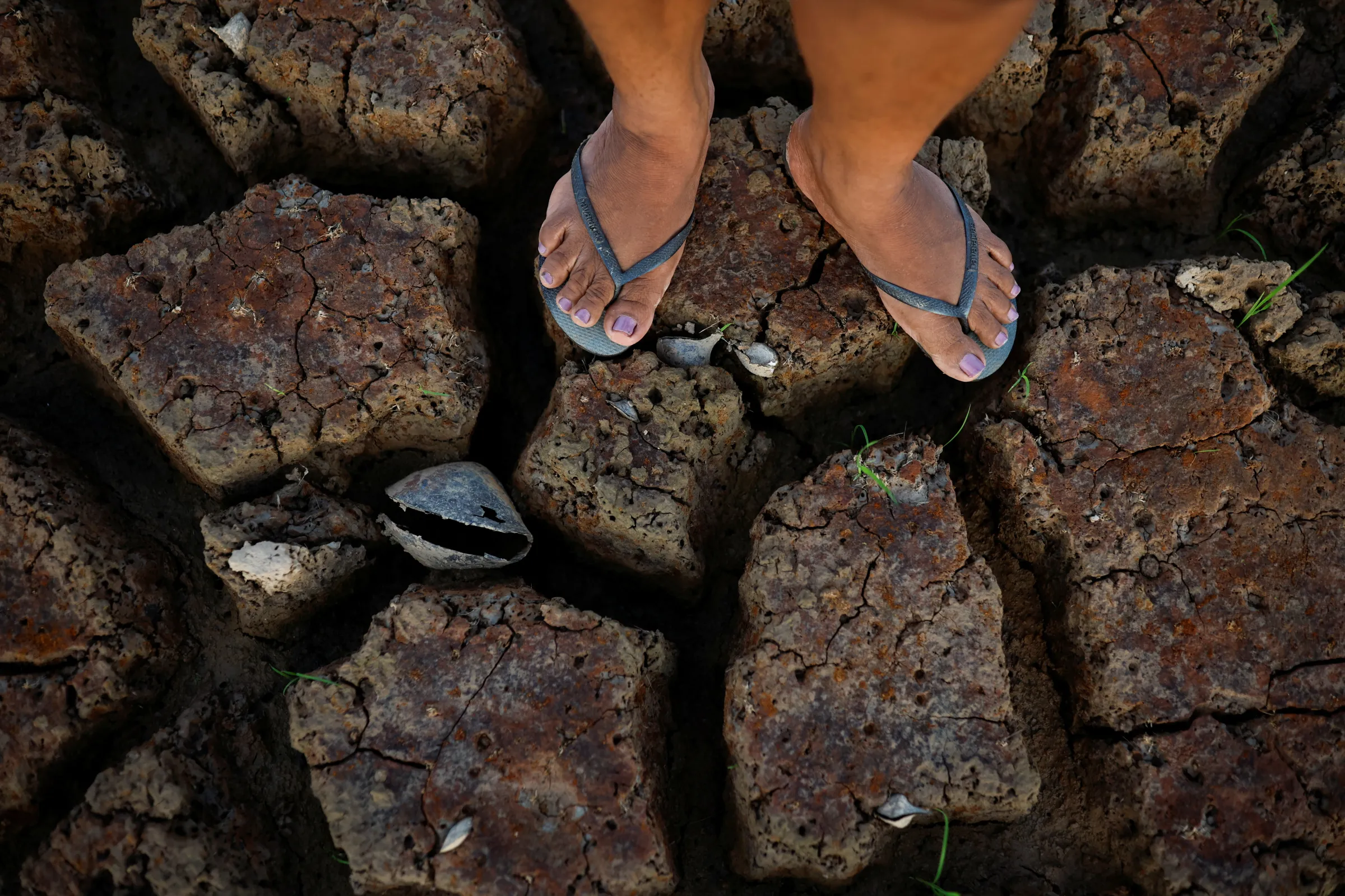Drought in the Amazon: How the world's nature is drying out

A woman stands on the dry bed of a Tapajos river during the intense drought that hits the Amazon, at Prainha 1 community in Tapajos National Forest, Para state, Brazil October 10, 2024. REUTERS/Amanda Perobelli
What’s the context?
Drought and desertification is making human life on the planet harder to sustain. What can be done?
- Three quarters of world's land permanently drier in 30 years
- U.N. COP16 desertification talks wrapping up in Riyadh
- More investment needed in nature solutions and local communities
RIO DE JANEIRO - As the world reaches record-breaking temperatures, three quarters of its land has become permanently drier over the last three decades, harming agriculture, nature and incomes, according to new U.N. figures.
Most of the shift is a result of human induced climate change, according to the report by the U.N. Convention to Combat Desertification (UNCCD) released at global COP16 talks on desertification in Riyadh, Saudi Arabia, which were due to wrap up on Friday.
The event seeks to strengthen global commitments to restore degraded land and hold back deserts, an endeavour the U.N. says would require a $2.6 trillion investment by 2030.
From the Amazon rainforest to African grasslands, climate-driven drought and land degradation are having a dramatic impact on nature and its ability to provide vital services to humans such as supplying food, water and clean air.
How much of the world has become drier and where?
In Europe, 95.9% of the land has become drier, with western United States, Brazil and central Africa also strongly affected, according to the UNCCD report.
Meanwhile, it found in the Middle East and North Africa there has been a 75% decline in water availability since the 1950s.
Globally, 4.3 million square km of land (1.7 million square miles), an area larger than India, lost enough water between 1990 and 2020 to turn into drylands – regions characterised by a scarcity of water, such as the Sahara desert or the Australian Outback.
South Sudan and Tanzania are the countries with the largest percentage of land now transitioning to drylands, while China is home to the largest total area undergoing this shift.
What problems does drought cause for nature and agriculture?
More than a fifth of all land on the planet could suffer "abrupt ecosystem transformation" due to loss of moisture, such as a grassland quickly turning into a desert, according to the U.N. report, citing 2020 research published in the Science journal.8
As a result of increasing dryness, about 55% of all mammals, reptiles, fish, amphibians and birds could lose their habitat by 2100, according to a 2023 study in the Earth's Future journal.
Scientists predict that loss of rainfall caused by deforestation and global warming could push the Amazon rainforest past a tipping point from which it would dieback, turning into something akin to a savannah.
The Amazon is now facing its worst drought on record, coupled with rising wildfires, a global trend as the world becomes drier and trees and other vegetation get sick or die, turning into fuel for flames.
According to the World Resources Institute, a global research center, today's wildfires destroy twice the tree cover that they did 20 years ago.
Meanwhile, according to the U.N. report, 40% of the world's arable lands are currently affected by low humidity, which affects soil fertility and harms crop productivity, especially in areas such as southern Europe - historically considered an agricultural breadbasket - and Africa.
In Africa, expansion of areas with low humidity has led to a 12% decline in the gross domestic product from 1990 and 2015, according to research cited by the U.N. report.
What does a drier world mean for people?
While 22.5% of the world's population lived in drylands in 1990, that figure rose to 30.9% in 2020 and could reach up to 40% by the end of this century, the report said.
According to scientists, drier conditions and wildfires worsen water and air quality, and intensify sand and dust storms, causing respiratory illnesses and disrupting electricity grids.
By damaging nature, a drier environment makes it more difficult for forests and other ecosystems to support human life - such as by regulating rainfall patterns for farmers, or absorbing rainwater in the event of floods.
In 2024, southern Africa grappled with unprecedented drought, leading crops to fail and livestock to die, spurring the worst food crisis in decades with a record five countries declaring a state of disaster.
Millions of people are already leaving regions facing water scarcity and agricultural collapse around the world, from the Middle East to Africa and South Asia.
What can be done to combat a drying world?
The report calls for countries to prepare for drought and also invest in water and land management to avoid becoming drier, promoting sustainable land use systems and encouraging participation from local communities.
This could be aided by technologies to boost water efficiency, including rainwater harvesting, drip irrigation and wastewater recycling, it said.
A separate report co-authored by the UNCCD and released early December calls for the use of nature-based solutions to restore land and fight desertification.
Measures include planting trees, managing livestock grazing, creating green spaces in cities, and using organic fertilisers and crop rotation to make the soil more healthy and able to hold more water.
(Reporting by Andre Cabette Fabio; Editing by Jack Graham and Anastasia Moloney.)
Context is powered by the Thomson Reuters Foundation Newsroom.
Our Standards: Thomson Reuters Trust Principles
Tags
- Agriculture and farming
- Biodiversity
- Water

















